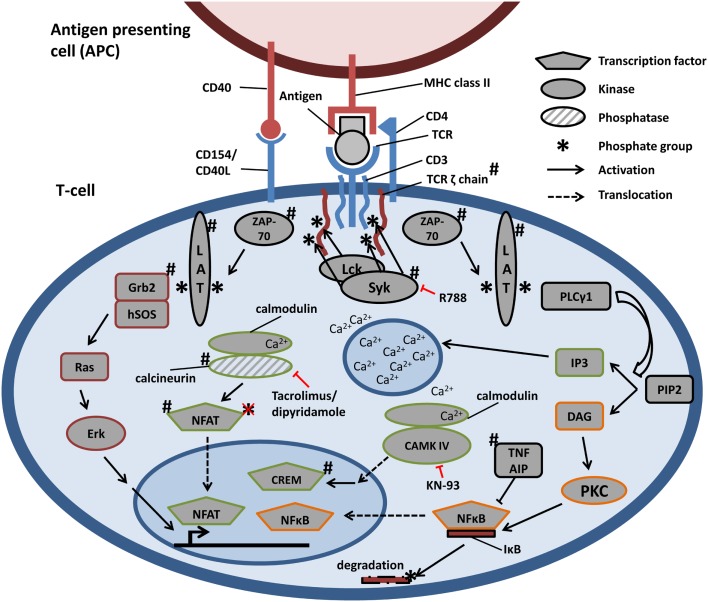Figure 1.
Schematic representation of TCR-signaling pathways and aberrancies in SLE. Engagement of TCR, through the recognition of antigen in the context of MHC class II, triggers the assembly of TCR, CD3, and TCRζ chains. TCRζ is phosphorylated and recruits ZAP-70, which in turn phosphorylates LAT. LAT serves as docking protein and phosphorylation initiates the activation of Ras–Erk, calcium-dependent, and PKC-driven signaling pathways. All signals result in the activation of transcription factors, accumulating in the nucleus and influencing gene expression. #Signaling components described to be aberrantly regulated in SLE (see Table 1 and text). Therapeutic targets are depicted in red. Key: R788 is Syk inhibitor; KN-93 is CAMK IV inhibitor.

